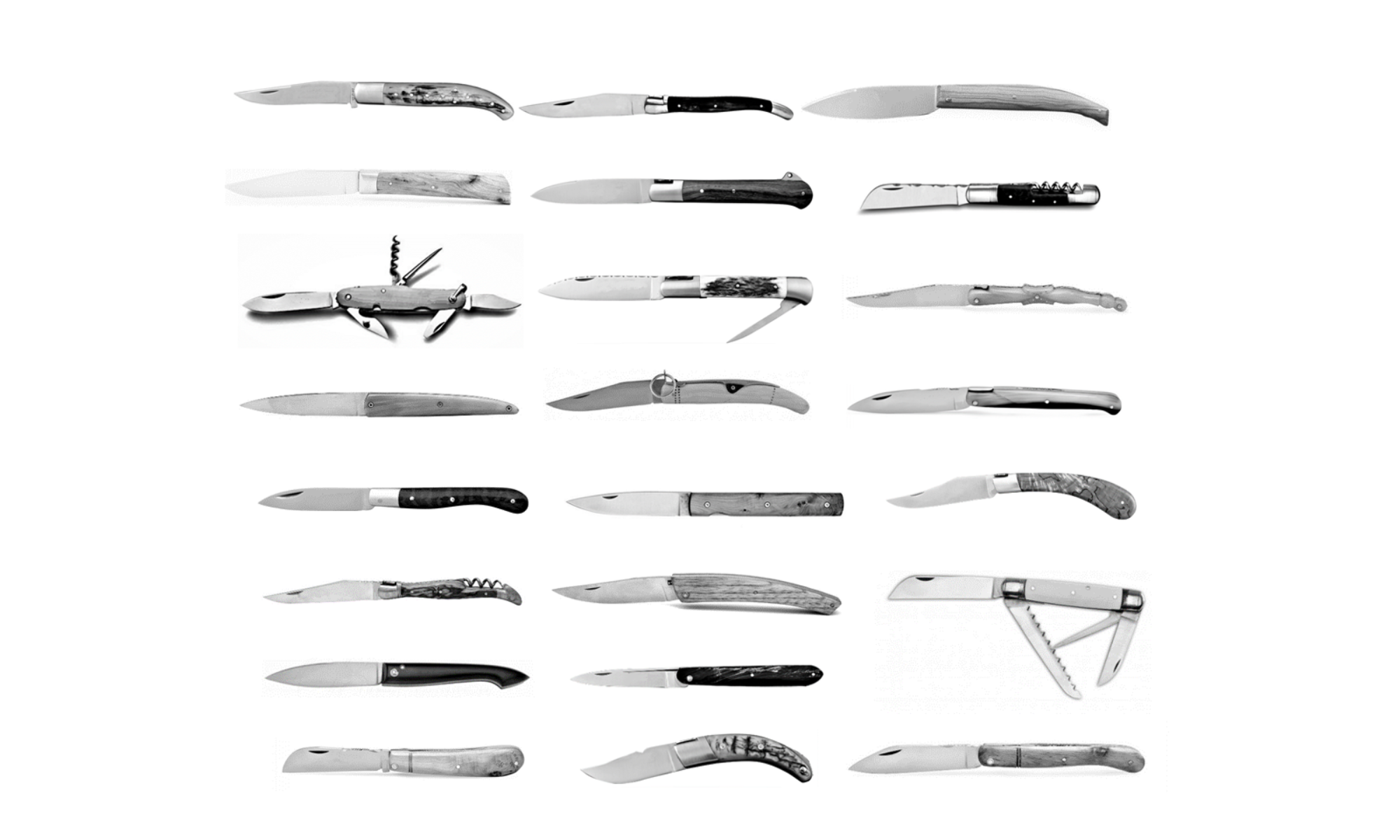
The story of the Douk-Douk started more than 90 years ago, in 1929, when Gaspard Cognet, that everybody called “Gaston”, decided to target the Melanesian market with a new folding knife.
At the end of the 19th and the beginning of the 20th century, Thiers was exporting its knives all over the world, especially in the vast French colonial empire. The MC Cognet was one of the biggest manufactures, and targeting the French islands in the Pacific Ocean seemed a good plan.
The knife was designed to be inexpensive and sturdy.
It is made of 6 parts, a carbon steel blade, a ferro-blackened folded sheet-metal handle, a strong spring nested inside the handle, a bail at the back and 2 rivets to assemble it all… That’s it.

Gaston was looking for a commercial catch for his knife. This was long before Google and Wikipedia and it is in an illustrated dictionary that he found the picture of a local divinity, the Douk-Douk.

The Duk-Duk (or Douk-Douk), sometimes called the god of chaos and doom, is an important figure in the Melanesian culture. The costume is made of a conical hat, a cylindrical mask made of bark, and palm tree leaves down to the knees. He goes screaming in the village, scaring people off, until he reaches the hut of the person suspected of a crime to deliver the punishment. Nobody dares going against him, as death would struck anyone who would raise his hand against the Duk-Duk.

The legend also gives him the power of healing. In this little character, looking like a mix between a pineapple and a fir, Gaston found his symbol. It was patented in 1930.

To complete his design, he opted for a Turkish clip / Scimitar style blade decorated with an electrochemical etching figuring arabesques, to give it a more exotic look.
The Melanesian market was a disaster and the stocks were redirected to other markets in the colonial empire. It finally met success in the French colonies of North Africa where people liked its low price and high quality blade, easy to sharpen, that was even sometimes used as a razor. From there it migrated to sub-Saharan Africa and even arrived in pygmy tribes.

It was carried by the French Foreign Legion and other Colonial troops and reached, with troops reassignment, the middle-east through Lebanon, and South-East Asia through Indochina. In 1939 it became “the national pocket knife” of Algeria.


Different variants were created, with different blade shapes: clip point, drop-point or sheep-foot. Some models disappeared like “Le Lion”, “Le Saharien” or “Ed Dib”, all for the North African market. Some are still around like the “Tiki”, another attempt for the Polynesian market, or the “Baraka”, with its nickel-plated handle.




It was so famous (and easy to make) that it also had countless copies.


The Douk-Douk gained its infamous killer reputation during the Algerian independence war. Largely available, with a sharp blade and flat enough to be easily concealed it was the perfect weapon. Once open, you can just hammer the two ears at the base of the blade to change it into a fierce fixed blade, ready to stab any private or officer who would dare to enter the Casbah.


It was so dangerous that the DST (French counter-intelligence) considered it as military equipment, banned its exportation to Algeria and seized the existing stocks. Those seized knives were then given to the troops as a utility knife.

In 1962, at the Algerian independence, the repatriated troops and civilians bring back the Douk-Douk to France, where it was unknown, and built up its reputation.



Today the knife is still produced using almost the same process and tools. Only concession to modernity, some models are fitted with a stainless steel blade, but the most appreciated remains the historical carbon steel.

A great pocket knife with a rich history!
Find some on http://knives-of-france.com


